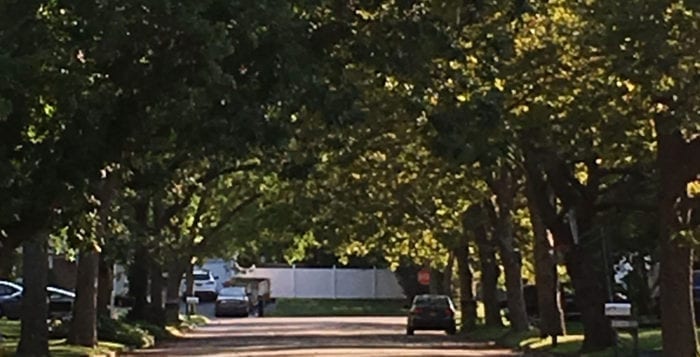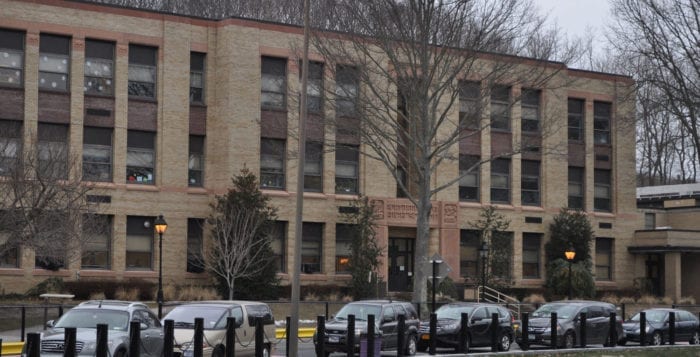Stony Brook residents visited the Brookhaven Town Board meeting last week to register their dismay over the large scale tree removal planned for the Strathmore housing development.
A total of 11 people addressed the issue of tree removal prior to road resurfacing during the public participation portion of the meeting.
The Brookhaven Highway Department has marked trees on several M-section streets.
Several of the speakers at the meeting were residents of the M-section, but others weighing in on the topic were just concerned citizens.
As commenters took to the microphone to express their frustration with the situation, Supervisor Edward Romaine (R) interjected and said he wanted to make it clear that these actions are not the responsibility of the town board.
“I just want to point out one thing,” he said. “The actions with the trees are not the actions of this board. They are the actions of the highway superintendent, who is an independent elected official.”
Community activist MaryAnn Johnston, of Mastic, commented on the highway superintendent’s aggressive paving policy. She said he paid no mind to resident objections in Coram regarding tree removal. “He needs to give communities advance notice — and he needs to follow the state-mandated SEQR (State Environmental Quality Review Act) process,” she said.
“People would rather live with those potholed streets than lose the trees.”
—Robert de Zafra
According to the state’s Department of Environmental Conservation website, the act “requires all state and local government agencies to consider environmental impacts equally with social and economic factors during discretionary decision-making.”
If there is potential for significant adverse environmental impacts, the site further explains, an environmental impact statement is required.
According to the Highway Superintendent’s office, SEQR does not apply in this situation. Based on Section 617.5 (c4), the project is part of an “in place, in kind” replacement of structures. A spokesperson for the office said this is only a repaving planned for an existing road, and no expansion is being made.
Prior to the start of public participation, Deputy Highway Superintendent Steve Tricarico was invited to make a statement. He acknowledged the presence of the M-section residents and said he was there to listen to them.
“I speak on behalf of the superintendent of highways when I state that it is by no means our intention to purposely remove trees or replace concrete that is not necessary,” he said. “In order to resurface these roadways, to mill them and to pave them, certain aspects of the root systems as well as the concrete are causing serious concerns to the department.”
After the outcry from the neighborhood, Tricarico said a letter was sent to affected M-section homeowners, stating that a re-evaluation would be made to determine which trees are absolutely necessary to remove.
Town Councilwoman Valerie Cartright (D-Port Jefferson Station) asked Tricarico if the superintendent is willing to participate in a community meeting once the reassessment is completed. Tricarico said Losquadro has already met with some of the concerned residents.
“I know the superintendent has been up there personally and has met with a number of residents … has spoken with them, both on and off camera, and will continue to do so moving forward,” Tricarico said.
Cartright said she will schedule a meeting and notify the community so they can be present to hear the department’s findings. The date of that meeting is not yet known.
Three Village Civic Association President Robert de Zafra, who was present to support historical status for a Stony Brook building, said he decided to add his voice to save the trees.
“People would rather live with those potholed streets than lose the trees,” he said. He also thanked Cartright for working to set up the future meeting.
















